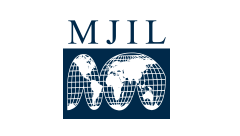Abstract
While American immigration law is still largely informed by the doctrine of plenary power, which holds that "[a]dmission to the United States is a privilege granted by the sovereign" (as the Supreme Court asserted in Knauff more than fifty years ago), what has dramatically changed in recent years is the location of "our gates," which no longer stand at the country's territorial edges. Instead, the border itself has become a moving barrier, a legal construct that is not tightly fixed to territorial benchmarks. This shifting border of immigration regulation, as we might call it, is selectively utilized by national immigration regulators to regain control over their crucial realm of responsibility, to determine who to permit to enter, who to remove, and who to keep at bay.
Recommended Citation
Ayelet Shachar,
The Shifting Border of Immigration Regulation,
30
Mich. J. Int'l L.
809
(2009).
Available at:
https://repository.law.umich.edu/mjil/vol30/iss3/9

